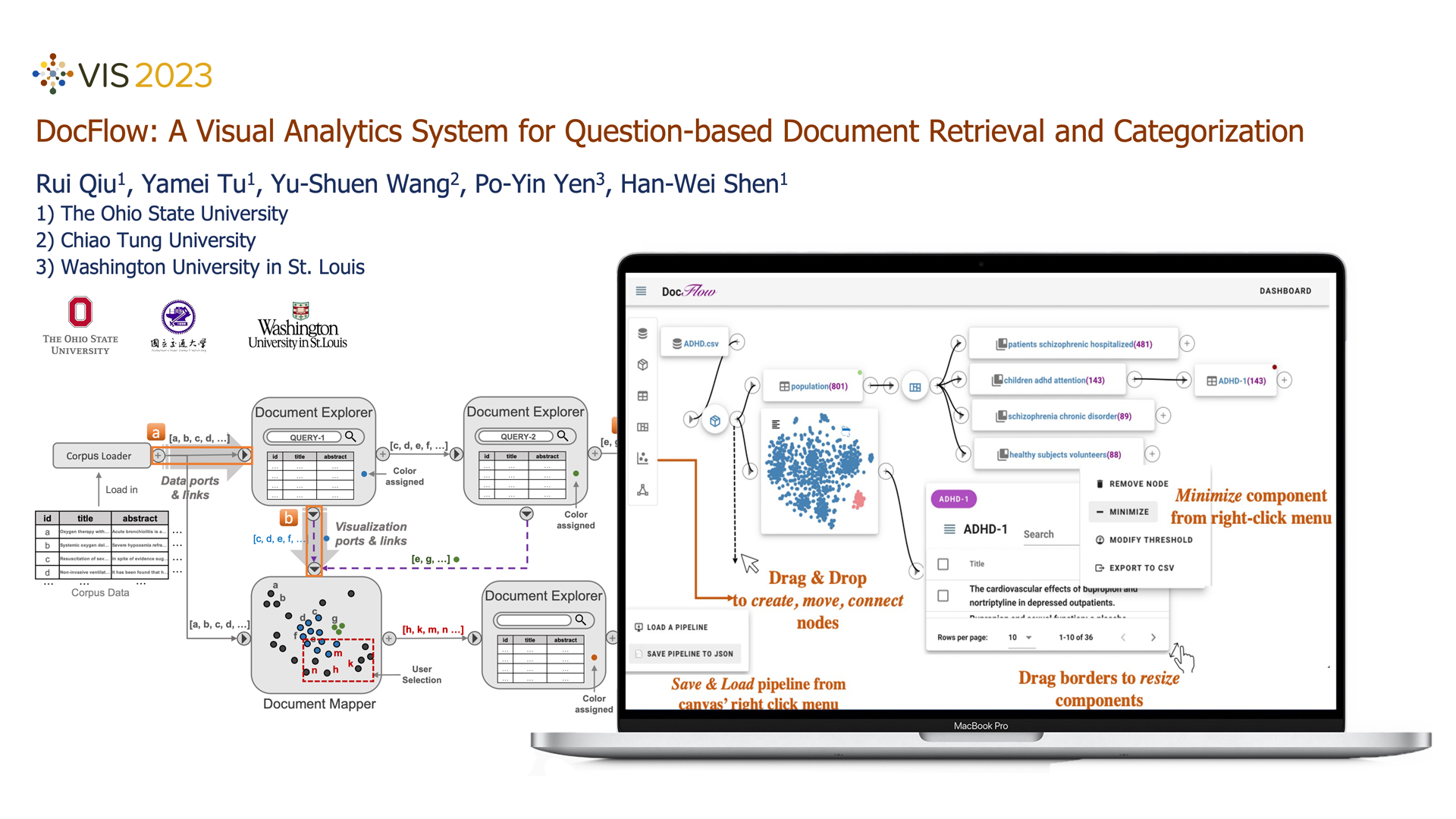DocFlow: A Visual Analytics System for Question-based Document Retrieval and Categorization
Rui Qiu, Yamei Tu, Yu-Shuen Wang, Po-Yin Yen, Han-Wei Shen
DOI: 10.1109/TVCG.2022.3219762
Room: 109
2023-10-25T22:24:00ZGMT-0600Change your timezone on the schedule page
2023-10-25T22:24:00Z

Fast forward
Full Video
Keywords
Biomedical systematic review;evidence-based-practice;human-in-the-loop information retrieval;question-based document retrieval;question-based document categorization
Abstract
A systematic review (SR) is essential with up-to-date research evidence to support clinical decisions and practices. However, the growing literature volume makes it challenging for SR reviewers and clinicians to discover useful information efficiently. Many human-in-the-loop information retrieval approaches (HIR) have been proposed to rank documents semantically similar to users' queries and provide interactive visualizations to facilitate document retrieval. Given that the queries are mainly composed of keywords and keyphrases retrieving documents that are semantically similar to a query does not necessarily respond to the clinician's need. Clinicians still have to review many documents to find the solution. The problem motivates us to develop a visual analytics system, DocFlow, to facilitate information-seeking. One of the features of our DocFlow is accepting natural language questions. The detailed description enables retrieving documents that can answer users' questions. Additionally, clinicians often categorize documents based on their backgrounds and with different purposes (e.g., populations, treatments). Since the criteria are unknown and cannot be pre-defined in advance, existing methods can only achieve categorization by considering the entire information in documents. In contrast, by locating answers in each document, our DocFlow can intelligently categorize documents based on users' questions. The second feature of our DocFlow is a flexible interface where users can arrange a sequence of questions to customize their rules for document retrieval and categorization. The two features of this visual analytics system support a flexible information-seeking process. The case studies and the feedback from domain experts demonstrate the usefulness and effectiveness of our DocFlow.